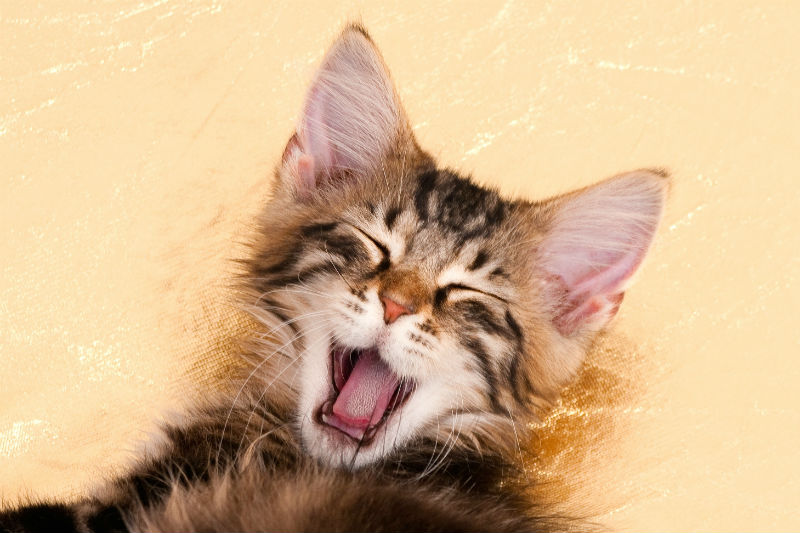It is recommended that your cat have an annual exam with a veterinarian each year. Senior animals should be examined every six months. Annual exams allow the veterinarian to catch problems early, while they are still manageable. It also allows the owners to discuss any questions or concerns they have about their pet, with a veterinarian. Many owners use this time to discuss things, such as is their pet is at a healthy weight, what diet they should be eating, any odd behaviours, as well as what normal urine and bowel movements look like for a cat. The doctor will palpate (feel) the internal organs, as well as listen to the heart and lungs during the exam to make sure everything is okay. Vaccination also occurs at annual exams. Vaccination is the best way to protect your pet from certain infectious diseases. Feline vaccinations include the FVRCP vaccine, the feline leukemia vaccine, and the rabies vaccine. The vaccines we use, have minimal side effects if any at all, they are considered very safe. Most pets do not show any signs of having received a vaccine. Some side effects do include slight soreness, slight fever, and lethargy. Unusual/rare side effects include vomiting, diarrhea, hives, and facial swelling.
One of the feline vaccines is the FVRCP vaccine. This vaccine vaccinates/protects against panleukopenia, rhinotracheitis, and calicivirus. That is how it gets its name – the FVR is for feline viral rhinotracheitis, the C is for calicivirus and the P is for panleukopenia. Kittens receive this vaccine three times to be boostered appropriately, then it is boostered again at their first annual exam, then every three years after that.
The feline herpes virus causes rhinotracheitis. This virus affects the lining of the nose, the trachea (windpipe), the throat, sinuses, and the eyes. Signs of this virus include sneezing, drooling, lethargy, and fever. Discharge from the eyes may also occur.
Calicivirus is a common respiratory problem in cats. It affects the cat’s eyes, throats, nose, lungs, intestines, and mouth. Symptoms of calicivirus include drooling, fever, tongue ulcers, or ulcers on the mouth, eye discharge, sneezing, and discharge from the nose. In some cases, calicivirus can cause pneumonia.
Panleukopenia is also known as feline distemper. It is VERY contagious and affects the blood cells in the brain, intestines/GI tract, and the bone marrow. It can also affect unborn kittens. Although it is most common in younger cats, it can occur at any age. Symptoms include lethargy, inappetence, fever, and vomiting.
Another feline vaccine is the rabies vaccine. Cats are the number one domestic animal rabies carrier in the United States. Cats can catch rabies if an infected wild animal bites them. In turn, once infected by a wild animal, your cat could infect you or your family. Rabies is almost always fatal in all species. Cats receive their first rabies vaccine around 16-weeks-old; then it is boostered at their first annual exam, then they receive it every three years. Signs of rabies can include eating things they aren’t supposed to (pica), fever, seizures, paralysis, avoiding water, dropped/locked jaw, difficulty or inability to swallow, lack of coordination, out of character aggression or shyness, sudden and excessive excitability, constant irritability, or frothy salivation.
The last vaccine we can give to cats is the feline leukemia vaccine. The feline leukemia virus (FeLV) can cause anemia and lymphoma. This virus only affects cats. Humans and other animals are not affected. This virus is spread through saliva and blood. It is usually transmitted by cats grooming one another, or by cats fighting. Kittens can catch this virus while they are in the womb, or when they are born through the mother’s milk. Signs of feline leukemia include pale gums, enlarged lymph nodes, fever, diarrhea, reproductive problems, infections, weight loss, poor appetite, unhealthy looking coat/fur, weakness, and lethargy. This vaccine is given twice as kittens, then yearly after that. There is currently no known cure for FeLV.
If you have questions about which vaccines are right for your cat and their lifestyle, please don’t hesitate to contact your veterinary team. Vaccinations are the number one way to protect your pet from infectious diseases.
Written by Mikaila Cariou, RVT
